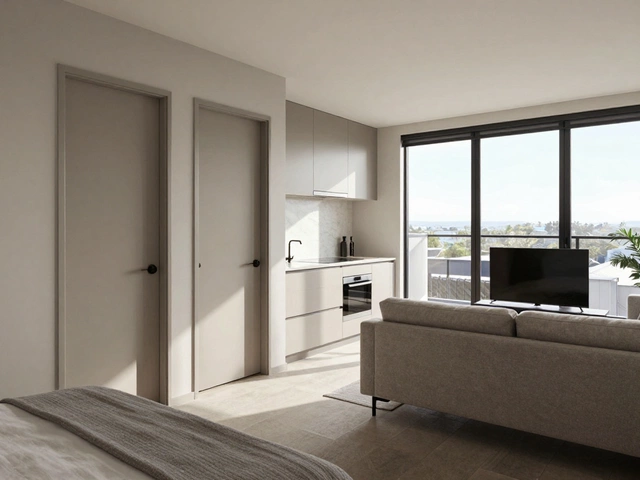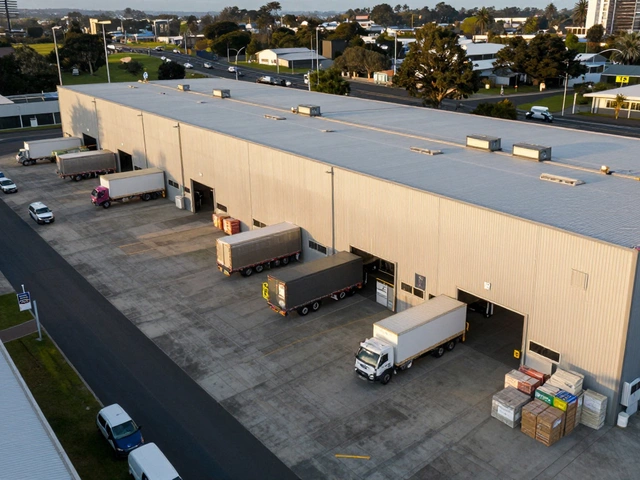Are We Facing a Commercial Real Estate Recession? Current Trends, Risks, and Real-World Impacts

Walk through any city center lately, and you’ll spot a scene that feels off: empty storefronts, darkened skyscrapers, and office lobbies echoing with the sound of your own footsteps. The rumor mills have been spinning about a "commercial real estate recession," but is this just media juice or does the reality match the headlines? Something has clearly shifted, and if your radar’s buzzing, you aren’t wrong—what’s happening in the commercial property market is more intense and dramatic than a typical down cycle. The story isn’t about old-fashioned boom or bust. Today, we’re wrestling with a mix of flexible work, higher financing costs, and fast-changing city life. Whether you’re a landlord, tenant, or just watching from the sidelines, it’s smart to get what’s really going on under the surface.
What’s Driving the Change in Commercial Real Estate?
Just five years ago, commercial real estate felt like a safe bet. Mall parking lots were packed, glass towers filled with suits, and warehouse space was gold. But since 2020, nothing’s felt certain. The first and maybe the most obvious culprit? The stubborn persistence of remote work. Nearly 38% of U.S. office workers now spend part of the week at home, according to the Pew Research Center’s 2025 update. Cities that once hustled from nine-to-five now host hundreds of half-used office floors. Building owners are squeezed, tenants try to renegotiate, and agents spend more time on the phone than at “showings.”
But it’s not just about the lack of commuters. There’s a brutal cocktail of higher interest rates—mortgage rates for commercial properties landed above 7% this year, which chips away at what buyers can afford. Add inflation and tighter lending standards, and you’ve got a recipe that makes bank financing far trickier. Deals fall through. Investors get jittery. Some landlords, especially those who bought in 2020 or refinanced lately, are struggling to make their loan payments as tenants leave.
Retail isn’t much better. Empty big-box stores litter shopping centers, with consumer preferences shifting towards online and smaller, experience-driven retail locations. According to CBRE’s Q2 2025 report, the average national retail vacancy rate climbed over 6.8%. That’s the highest it’s been in a decade. Mall owners feel the squeeze, slashing rents or offering major concessions just to keep a pulse. Meanwhile, industrial and warehouse sectors still show patches of strength—e-commerce needs those giant fulfillment centers—but even there, land values are flattening out as inventory builds up and costs rise.
One more curveball: cities and states are rethinking taxes, zoning, and incentives, sometimes adding extra headaches for landlords and new investors. The push for "greener" buildings adds upfront costs, but ignoring it means getting left out of major leases. CRE isn’t one big monolith—each type of property faces its unique storm cloud.
Crunching the Numbers: Vacancy, Values, and Who’s Hurting Most
If you want a quick way to spot trouble, look at office vacancy rates. In 2025, New York City’s vacancy just cracked 19%, the highest since anyone started counting in the 1970s, as reported by Colliers. San Francisco’s not doing any better, stuck north of 25% vacant, with “For Lease” signs multiplying across the skyline. Even markets known for their stability, like Dallas or Atlanta, are watching vacancies creep up year over year.
Lower tenancy means one thing for values: they drop. Nationally, average commercial office values slid by 13% since mid-2022, with prime Class A properties faring best. Lesser buildings lost even more. Real Capital Analytics counted over 80 “distressed” skyscrapers nationwide, either headed for foreclosure, auction, or a forced fire sale. Some real estate investment groups admit they’re walking away from underwater properties, handing keys back to banks, since selling would lock in massive losses.
This isn’t a short-term blip, either. Debt maturities coming due in 2025 and 2026 are enormous—over $560 billion in CRE loans, says Moody’s Analytics. Refinancing at today’s higher rates is brutal. Many owners who borrowed cheap are suddenly staring down the barrel of much higher payments. That spells trouble for everyone: not just the property titans, but pension funds, regional banks, and regular workers whose jobs depend on bustling buildings.
Retail and mixed-use properties tell a similar story, but with a twist. You’ll see certain suburban centers—especially those with lots of restaurants, service businesses, or ethnic groceries—holding steady or even growing. But aging, oversupplied malls are turning into ghost towns or creative “adaptive reuse” projects (gyms, pickleball courts, or self-storage). Rates for industrial and logistics properties, especially near busy ports or major highways, haven’t cratered, but even there, supply is catching up to demand.
Not everybody’s suffering, though. Owners with little or no debt (think family offices or century-old property companies) can weather the storm. New entrants with private capital—unburdened by old loans—sometimes swoop in and grab bargains. But if you’re highly leveraged, or if your tenants are tech firms trimming square footage, the next year or two could get rough.

What a CRE “Recession” Really Means (And What to Watch Next)
So, are we really in a "commercial real estate recession"? It’s not a traditional recession where everything nosedives at once. Instead, it’s more like a rolling thunderstorm, hitting some towns hard and letting others escape with a drizzle. In banking terms, it's enough to trigger caution. More than a dozen regional banks across the Midwest and Northeast flagged commercial real estate losses as the #1 risk in their 2025 quarterly filings. Regulators in Washington launched new stress tests on mid-sized lenders whose portfolios are packed with office and retail loans. Easy to see why: just one or two big properties going bust can dent a local bank’s bottom line for years.
And it’s not just about money. There’s a ripple effect into city life itself. Half-empty towers mean less lunch-hour traffic for cafes, fewer happy hour crowds for bars, and a quietness that outlasts the workday. Some big cities like Chicago and Los Angeles are mulling tax breaks or low-cost loans to help convert unused office blocks into apartments. These “conversions” aren’t easy: plumbing, wiring, and window layouts aren’t always a match for residential living. But the incentive is there—everybody wants to avoid “dead zones” downtown.
If you’re looking for bright spots, they do exist. Life sciences, medical real estate, and datacenter properties have strong demand. Even old warehouses can get new life as last-mile delivery hubs. Creative investors are focusing on converting class B and C offices into live/work spaces or smaller, flexible offices for start-ups and gig workers.
What’s absolutely clear is that this isn’t going away next quarter. Most analysts expect a slow grind rather than a nice V-shaped recovery. The National Association of Realtors predicts that national office vacancy will stay above 17% right through 2026. Lenders will remain choosy, appraisers are conservative, and property owners can expect hard conversations on leasing and financing.
For investors on the sidelines, it’s a time for patience, deep research, and a long-term view. Quick flips are risky in a market with falling or flatlining values. But for those with cash, courage, and the ability to hunt out local opportunities, history shows that distress periods can create some lasting fortunes—if you don’t get caught catching a falling knife.
Tips and Ideas for Landlords, Tenants, and Investors in 2025
If you own CRE, the days of "set-it-and-forget-it" are gone. Proactive outreach matters—a lot. Call tenants before they call you, get creative with lease options, and look for ways to share costs (like energy upgrades or co-marketing). Flexible lease terms and shared amenities (think on-site gyms, pop-up retail, rooftop green spaces) have real value to today’s renters. Laura and I know several small property owners who filled their buildings by offering shared meeting rooms or digital amenities that remote workers love.
For tenants—especially smaller businesses—the ball’s in your court. Now’s the best moment in years to negotiate favorable terms. That means free rent, build-out allowances, lower escalation, or flexible exit options. But don’t wait too long; in markets with heavy demand (like logistics or medical office), landlords still have the upper hand. The trick is knowing which segment you’re in, and not assuming every property is desperate.
If you’re investing, get finicky with your research. Dig into the specifics: who are the anchor tenants, when do their leases expire, what’s the local development pipeline? Be ready for longer holding periods and don’t lever up to the hilt. If a deal seems too good to be true, there’s probably a catch—maybe a big refinance headache or deferred maintenance cost. Syndications and real estate investment trusts (REITs) focused on strong segments (like datacenters, medical offices, or last-mile industrial) can still perform, but double-check the underlying loans and property fundamentals.
- Focus on niche sectors—medical, life sciences, data centers, and logistics hubs are holding up better than office and retail.
- If you’re a landlord, invest in upgrades for energy efficiency to attract higher-tier tenants who care about ESG (environmental, social, governance) policies.
- Be wary of “zombie” buildings in older downtowns; these may get harder to lease at any price without major renovation.
- For investors, keep a close eye on local job and population trends—these drive demand in ways national headlines miss.
- Network with local commercial brokers who truly know what’s happening on the ground, not just national averages.
Big institutions are adjusting as well. Pension funds are ramping down new CRE commitments, waiting to see how defaults and distress play out. Lenders are tightening requirements, demanding more equity upfront and better business plans from borrowers. Expect stricter underwriting on any new loans, and don’t be surprised by longer approval timelines.
So, are we in a recession? For many corners of the market, especially office towers in top cities, the answer is yes. But like all storms, this brings different lessons—and opportunities—depending on what you're holding and how fast you can adapt. Stay curious, stay cautious, and watch for those pockets of strength amid the noise. If you’re playing the long game, this could be the very moment you’ve been waiting for.





